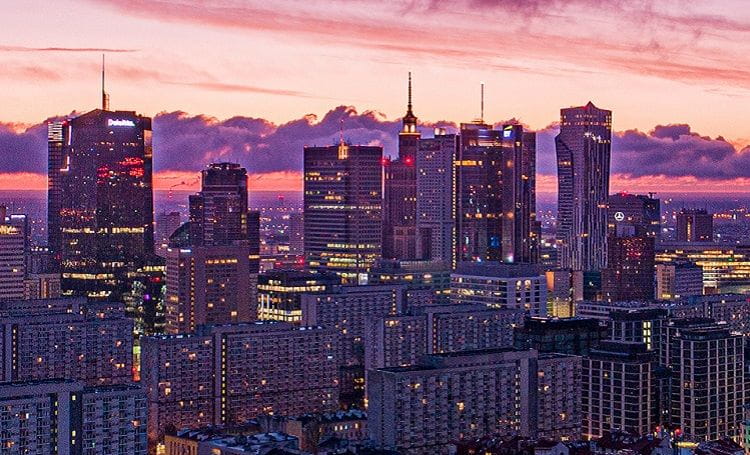For a warehouse to function successfully, its space should be appropriately adapted to warehousing operations and processes to ensure it runs efficiently and smoothly. It is therefore essential that appropriate warehouse zones are set up.
Warehouse zones help organize workflow and assign appropriate functions to individual places to increase the speed and efficiency of operations. The process layout of a warehouse should be carefully analysed. There are multiple options to choose from, both organizational and technical, but it is important that they are suitable for circumstances. Well-defined zones help people work faster while poorly designed space will slow down warehousing processes which comprise receiving, storing, picking and releasing goods. That is why a well-thought-out division of a warehouse into zones is so very important.
It is advisable to designate five basic zones within a warehouse: a loading and unloading zone, a reception zone, a storage zone, a picking zone and a shipping zone. Warehouses also need to have a number of additional zones such as a returns processing zone which – with the rise of e-commerce – has recently become an essential part of properly functioning space. It is notable that return rates reported by fashion sector leaders reach up to 50-70%. As a result, separate warehouse facilities are being developed and dedicated to returns processing, a trend that is growing. Additional zones likely to be designated in a warehouse include an office zone, a battery charging zone and a complaint zone.
A loading and unloading zone
A loading and unloading zone is where inventory is brought into and taken away from a warehouse. This space is located next to loading docks and is utilized for transporting goods from trucks to reception zones or from shipping zones to trucks. It can be divided into two separate areas or designed as a single zone, depending on whether the warehouse features a through-flow layout or loading docks at one side only.
A reception zone
This area is used not only for receiving products, but also for controlling the quality and quantity of orders, and for sorting. It should be separate from the rest of the warehouse but close to the unloading zone. Order and smooth workflow are critical in this zone, which is central to the whole warehousing process. Reception zones have recently seen a growing focus on process automation which has a direct positive effect of the quality of work in the warehouse.
Appropriate access and suitable lighting are fundamental in the two above zones. To meet these requirements, developers offer moving the first line of columns back 24 metres from the loading docks and appropriate lighting in these areas to help eliminate errors and streamline processes.
A storage zone
A properly arranged storage zone should be used only for storing goods. Products can be stored on racking units, racks or stacked on the ground in blocks. Larger solutions include multi-level pick towers for picking individual items. Racking units are the best for optimizing storage capacity. The choice of a storage method depends in particular on the type of product.
A picking and sorting zone
This zone is optional as it is not always required for warehousing operations. It is sometimes combined with the storage zone when the area of the picking zone is limited. This is where products are put together, modified if necessary, and orders are picked. Process automation is frequently the reason for sectioning this area off as a separate zone. Additionally, items which are picked in the storage zone and have to be assigned to other picked products, destinations or sizes are often sorted there.
A shipping zone
This is where picked orders are packed and dispatched for delivery. This zone should be separated from the rest of the warehouse to ensure efficiency.
Zones in a warehouse for e-commerce
The names and types of zones may vary depending on the volume and range of products handled. In terms of operations, e-commerce sometimes requires up to three times more space than physical retail; as a result, an increase in shopping for a specific range of products will translate into a stronger warehouse market growth. As this trend looks set to intensify, it is advisable to make sure that your warehouse is prepared for the challenges of online order fulfilment. Answers to the following questions will help you be informed:
• Do I have an appropriate number of shelf racks for storage and smooth picking of goods?
• Do I have an appropriate number of stations for packing, returns processing, co-packing and complaint handling?
• Do I have appropriate social space for employees whose numbers are likely to be significantly higher during peak sales?
• Do I have an appropriately integrated warehouse management system and do I have code scanners or any other technology facilitating order picking?
• Does the warehouse maintain the right temperature irrespective of seasons and weather conditions?
• Do I store particularly valuable goods in a separate zone with access control?
• Is my warehouse equipped with a system of cameras to support security and handling complaints from customers and couriers?
• Are the warehouse and goods insured against accidents?
• Am I operationally prepared to receive goods at non-standard times or shortly after an order is placed to offer customers various ways of delivery, including the same day delivery?
An ideal warehouse for e-commerce
In terms of purely operational performance, an ideal e-commerce warehouse should be divided as follows:
• Various storage zones (pallet and shelf racks, clothing racks). Such systems should enable easy transfer or relocation of products within and between zones, e.g. during changes of seasons or during sales and promotions,
• Dedicated product storage systems (e.g. single- and multi-SKU locations, chaotic storage, zone storage),
• A zone with value-added services (labelling, co-packing, picking promotional sets),
• A shelf zone for leaflets, supplements and samples added to parcels in a packing zone,
• A returns processing zone,
• A sorting zone,
• A buffer zone for picked orders waiting to be handed over to a courier company, and
• A storage zone for packaging materials.
A warehouse divided into zones allows for an optimal use of its space and ensures a smoother workflow. It is essential that warehouse zones are planned carefully and adapted to processes taking place in them.







